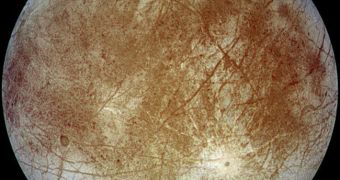Since it formed about 4.5 billion years ago, our planet has suffered catastrophic collisions with other space bodies, which sometimes led to extinction events here. However, it could be that the same instances led to the spreading of basic lifeforms to other celestial bodies in our solar system.
In a new study published online in the journal arXiv, investigators analyze the probabilities of Earth's ejecta plumes reaching other planets and moons. They say that the debris may have even reached points beyond the orbits of Jupiter, the fifth planet form the Sun.
What makes this discovery interesting is the fact that basic microorganisms such as microbes and bacteria can travel inside such ejecta objects, able to withstand the harsh conditions of outer space.
Investigations conducted over the past decade or so have demonstrated that lifeforms can survive being ejected to space in a violent cosmic collision, traveling for millions of years inside their lifeboats, and then surviving atmospheric reentry on another body.
Once there, life uses its built-in ability to adapt, which functions extremely well regardless of the environment it comes across. On Earth, microorganisms live anywhere from 3 kilometers below the ices of Antarctica and miles beneath the Earth's crust to volcanic crater and near hydrothermal vents.
Given this resiliency, it may not be such a stretch to assume that life was carried by ejecta plumes generated when Earth was impacted by massive asteroids. According to experts, the most probable scenario is where the microbes reached Venus or the Moon.
The reason why this is the most likely scenario is because the Sun's gravity would have pulled on the ejecta plumes towards the inner solar system. However, it is not entirely impossible for some material to have made its way towards Mars, Jupiter, or even beyond.
The recent investigation, led by Universidad Nacional Autonoma de Mexico astronomer Mauricio Reyes-Ruiz, represents that largest, most comprehensive simulation of Earth eject plume behaviors.
Their computer model shows that two orders of magnitude more particles reach Mars than what was originally calculated. Interestingly, at high and very high ejection speeds, test particles are more likely to make their way to Jupiter rather than Mars, Technology Review reports.
Another remarkable finding was that many particles make their way out of the solar system entirely. What this implies is that lifeforms originating on our planet may now be on their way to colonize other worlds as we speak.

 14 DAY TRIAL //
14 DAY TRIAL //